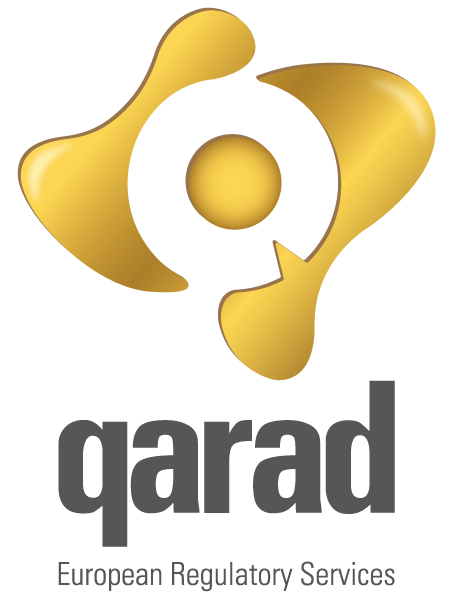Commission Implementing Regulation (EU) 2017/2185 on the list of codes and corresponding types of devices for specifying the scope of the designation as notified bodies in the field of medical devices under Regulation (EU) 2017/745 of the European Parliament and of the Council and in vitro diagnostic medical devices under Regulation (EU) 2017/746 of the European Parliament and of the Council, was published in the Official Journal of the European Union 23rd November 2017.
A notified body is an organisation designated by an EU country to assess the conformity of certain products (e.g. medical devices and in vitro diagnostic medical devices) before being placed on the market. These bodies carry out tasks related to conformity assessment procedures set out in the applicable legislation. More information can be found here.
The European Commission published the draft implementing regulation regarding the codes for the designation of Notified Bodies in the field of medical devices and in vitro diagnostic medical devices for public consultation 27th September 2017. The feedback period ran from that date till 25th October 2017. Qarad, through its membership to the European Association of Authorised Representative raised its concern during this period.
Harsh criticism from many of the stake holders (industry, notified bodies, association of authorized representatives and even some national competent authorities) was given during the consultation period.
The primary subject of critique was the set of codes proposed for IVDs. The list of 100 codes was considered by many as unnecessarily excessive (in comparison to the 71 codes proposed for medical devices).
Notified bodies must apply for a designation as conformity assessment body under the IVDR using these codes. The codes a notified body is designated for, define the scope of that notified body. To obtain designation the notified body must demonstrate their competence, and have the necessary expertise available, for each code applied for.
The proposed level of granularity, rather than providing clarity, is adding confusion and creating a lot of difficulties for both notified bodies (which have to demonstrate competence for each of the codes they want to apply for) and for the industry (which may need to contract more than one NB to cover its product portfolio if the company will develop (or acquire) some assay for which their NB is not qualified to operate).
The good news is that the final published version of the implementing regulation sees a reduction in codes for IVDs from the originally proposed 100 to 80. However, considering the size and the diversity of the market (~ 500,000 different type of medical devices compared to ~40,000 IVDs(*)) the 80 NB codes created by the Commission for IVDs still seems largely disproportionate when compared with the 71 for medical devices.
The final list of codes, available in Annex II of the Implementing Regulation, with which we will have to live for the foreseeable future, contains the following tables:
80 NB codes for IVDs
Table I: Codes reflecting the design and intended purpose of the device = Total of 33 codes
- Blood grouping: 6 codes
- Tissue typing: 2 codes
- Cancer and non-malignant tumours: 2 codes
- Human genetic testing: 3 codes
- Marker of infections / immune status: 6 codes
- Non-infectious pathologies, physiological markers, disorders / impairments (except human genetic tests) and therapeutic measures: 9 codes
- Controls w/out quantitative/qualitative value: 2 codes
- Class A in sterile conditions: 3 codes
Table II: Horizontal Codes = Total of 47 codes
- Devices with specific characteristics (NPT, self-tests, Companion Diagnostics, sterile, etc.): 10 codes
- Devices for which specific technologies are used (metal/plastic/non-metal mineral processing, biotechnology, chemical processing etc.): 11 codes.
- Devices which require specific knowledge in examination procedures for product verification (agglutination, biochemistry, chromatography, chromosomal analysis, coagulometry, flow cytometry, immunoassays, NGS, etc.: 14 codes
- Devices which require specific knowledge in laboratory and clinical disciplines for product verification (bacteriology, clinical chemistry, detection of transmissible agents, genetics, haematology/haemostasis, histocompatibility, immunohistochemistry, immunology, molecular biology, mycology, parasitology, virology): 12 codes
3 key recommendations were made to the EU Commission during the consultation period on their first draft regarding the 100 codes for IVDs:
- Only safety & performance related codes should be published.
- The number of codes and the level of detail should be proportionate to IVDs (when compared to MDs).
- Repetition between codes should be avoided.
Although the Commission reduced the number of codes (from 100 to 80) there are still codes which are redundant, or which have little or nothing to do with IVDs.
Some examples of codes adding little value or even potentially creating cost and workload w/out any patient benefit are:
- The codes listed in table II. 2: “In vitro diagnostic devices for which specific technologies are used” (the metal, plastic, non-mineral processing one) seems to be a “cut & paste” taken straight from the medical device codes.
- The fact that this table lists Code IVT 2011 for “In vitro diagnostic devices which require packaging, including labelling”, thus requiring a specific competence from NBs, leaves the reader not knowing whether to laugh or to cry…
So, whether this Implementing Regulation is greeted with a smile or with a frown, these are the codes with which we will all have to work for the next 20 years or so.
The most important consideration to be made is that already several IVD manufacturers are committing to work in these days with specific organizations in the belief that they will become notified bodies under the IVD-Regulation and they are doing so purely on good faith.
In fact there will be no publicly available lists of the organizations which have applied to be notified as IVD-R NBs nor for which codes they have applied for.
Qarad can not only assist you to work with your current NB in order to ensure your future interests and presence on the EU IVD market will be guaranteed, but will keep you informed on any future developments that relate to the EU IVD-Regulation 2017/746 and on matters impacting industry.
(*) Source: feedback from MedTech Europe 2017-10-25 on the draft Implementing Regulation, available via the website.

